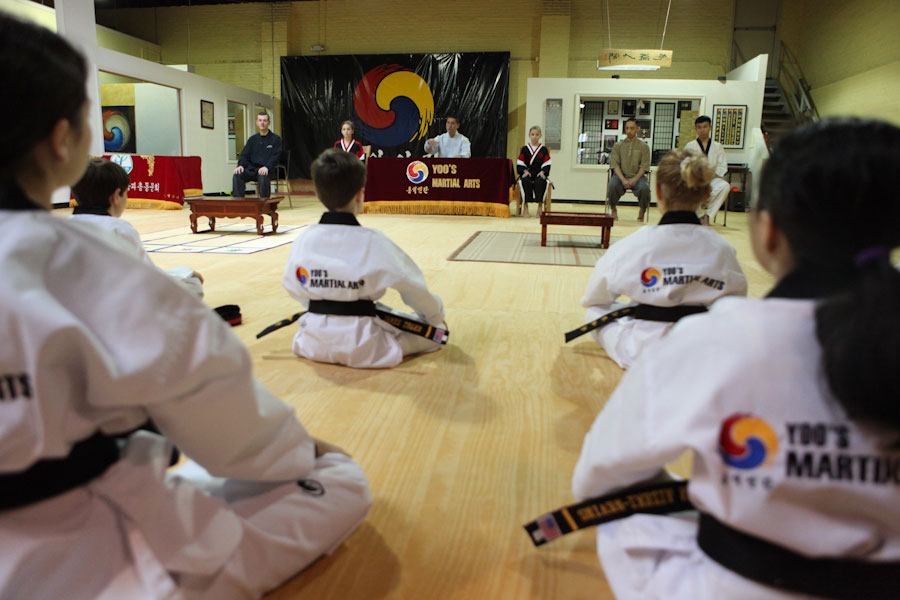
Korea and Tae Kwon Do – A Brief History
Korea has a history that is as long and as exciting as Tae Kwon Do. Originally, started by a legendary soldier king, Dongoon, the kingdom was formed into one nation from many tribes about 23 centuries before Christ. The kingdom was founded at the high point of Egypt’s existence but a few centuries prior to the Roman Empire. It lasted for over 12 centuries.
Three kingdoms emerged from Korea. The first was the Koguryo located both in southern Manchuria and in the north of Korea. It thrived from 37 BC to 668 AD. The next was the Pakje kingdom which was from 18 BC to 600 AD and rested by the Han River in southwestern Korea. The third was the Silla kingdom which lasted to 936 AD.
Archaeologists have found murals inside royal tombs from the Koguryo dynasty. They also found stone sculptures of pagodas to temples made in the Silla period. Further, documents written during the Pakje dynasty all show early signs of the art of Tae Kwon Do. It is believed that people in all of these three kingdoms practiced this martial art.
Silla eventually merged the three kingdoms. Throughout Korean culture, Tae Kwon Do was influenced and perfected by the military and educational organization for all noble youths. The Hwa Rang Ro as it was called kept the kingdoms unified.
In the organization there was a strict code of honor. It embodied respect, obedience to parents, and faithfulness to friends. It encouraged avoiding violence or killing when doing battle while encouraging bravery.
There are scattered documents written during the times of each of the three kingdoms. These show that not only did the Hwa Rang Ro regard using unarmed combat it also promoted studying it for physical and military training. It was also recommended as a purely recreational activity.
It was not until the Koryo Dynasty which lasted to 1392 AD that unarmed combat became extremely popular. It was studied and practiced by the military as well as the general population. This was also the first period where science began being organized by various masters. This was helpful in bringing the techniques used in combat to light. Military masters who were expert at Tae Kwon Do were invited to royal courts to perform for royalty and to demonstrate these techniques.
Japan overtook Korea during the Yi or Joseon Dynasty which was from 1392 AD to 1910 AD. In 1910, the dynasty was forced to get rid of all Korean sports teams and its martial arts. Japanese martial arts were introduced and forced upon the people until the country was liberated in 1945. During this time, karate was the most popular form of martial arts practiced in Korea.
Even though this was the case, true Korean martial arts had their start many centuries prior to this. They were perhaps put on hold but most definitely not forgotten. After all, the practice was sacred to Korea and developed by its military. Every part of the body that could be used as a weapon was trained to do so. Complicated skills were put into place and made a part of every soldier’s training.
The military used science to continue perfecting Tae Kwon Do. First, the study of a human’s natural weapons like fists and feet were established. Tae Kwon Do was originally called Su Bak Do. After many more centuries, it became known as Kwon Bup and then later on, TaeKyon. This art was vital to a warrior’s skills.
It was not until 1955 that the Republic of Korea gave the art the name Tae Kwon Do. Many leaders in martial art schools began to open martial art schools called dojangs. These were established under names like Su Bak Do, Kong Soo Do, and Kwon Bup among others. Some instructors wanted to go back to the traditions of Korean unarmed combat.
Therefore, a conference was held to help unify dojangs. Unfortunately, standardizing teachings was not successful. This is where the different schools of Tae Kwon Do came from.
In the 1970s, the World Tae Kwon Do Federation was established by Dr. Un Yong Kim. His leadership allowed the foundation to grow to 178 member organizations in Korea. The World Tae Kwon Do Federation later became affiliated with the General Assembly of the International Sports Federation. This affiliation made Tae Kwon Do a fully international sport.
Tae Kwon Do Championships were held both in 1973 and 1975 in the capital city of Seoul. The martial art was also eventually recognized by the Military Sports Council and has been added to its list ever since.

